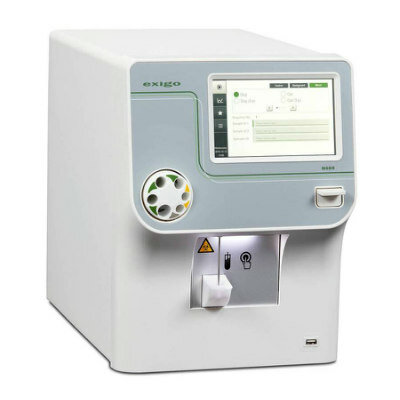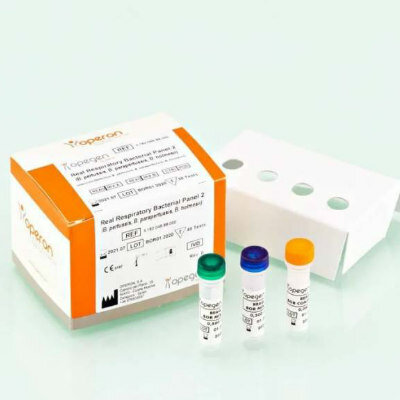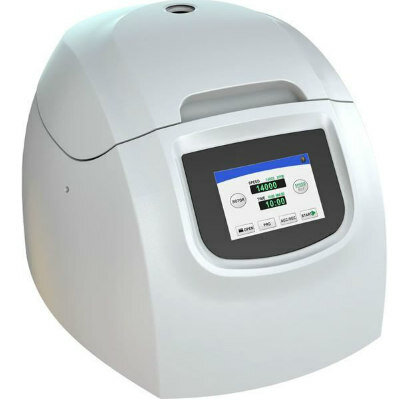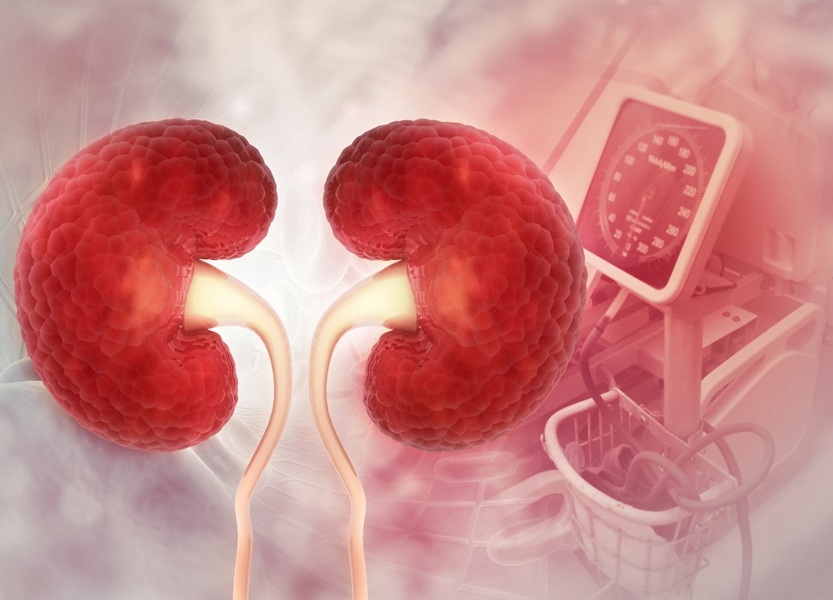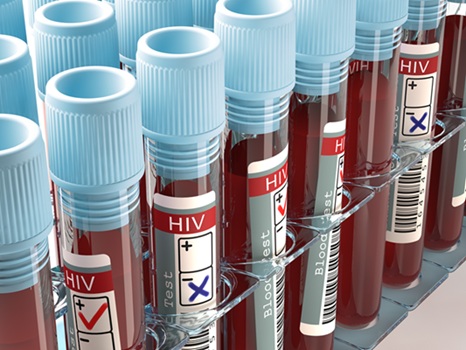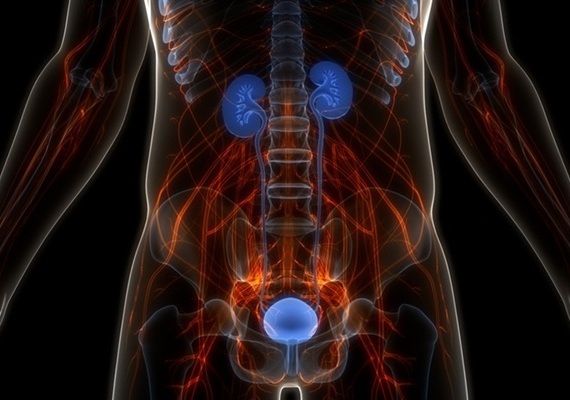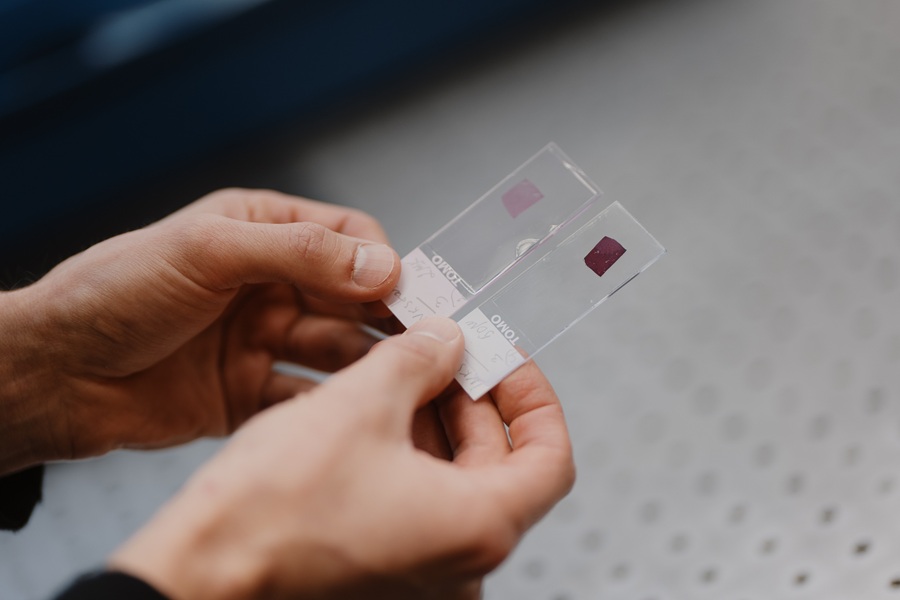Cardiac Valve Pathogens Detected by Multiplex Assay
|
By LabMedica International staff writers Posted on 14 Jan 2014 |
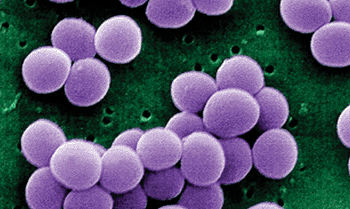
Image: Scanning electron micrograph of coagulase-negative Staphylococcus aureus bacteria (Photo courtesy of Janice Haney Carr).
Infective endocarditis (IE) is a life-threatening condition burdened by high mortality, and gram-positive cocci account for the majority of the cases.
Blood culture represents a cornerstone for the microbiological diagnosis of IE, but it can be negative in a substantial number of patients. Similarly, culture of excised cardiac valves can be burdened by a considerable number of false negative results, mostly in patients under antibiotic therapy, or by false positive results, due to contamination.
Microbiologists at the University of Perugia (Italy) carried out a proof of concept study using a commercially available multiplex real-time polymerase chain reaction (PCR) for the detection of pathogens in cardiac valves from patients with infective endocarditis. Between June 2011 and January 2013, 20 cardiac valves, 11 mitral and 9 aortic excised from an equal number of patients with definite IE diagnosis of known etiology were tested by conventional culture and the real-time PCR test. Five aortic valves excised from non-IE patients, affected by noninfective cardiac complications, were included in the study as controls. Mean age of the patients was 64.2 years and all patients were on antimicrobial therapy during sampling.
All excised valves were examined with Gram stain and inoculated into culture media. The commercially available SeptiFast real-time-PCR system (Roche Molecular Systems; Mannheim, Germany) was evaluated as a diagnostic tool for IE and was performed in Roche Diagnostics’ LightCycler instrument. An organism detected by SeptiFast (SF) test was considered true pathogen if it coincided with the infectious agent previously isolated from blood culture, collected from the same IE patient.
The SeptiFast test gave a positive result in 19 out of 20 valves from patients with IE, and a negative result in all the five valves from non-IE patients. In all cases, the organism detected by the test was concordant with the known etiologic agent and Gram staining. Culture was positive in 3 out of 20 valves from IE patients, for microorganisms matching those previously isolated from blood culture and was negative in all valves from non-IE patients, and therefore culture sensitivity was only 15.8%, and specificity was 100%. Gram staining was positive in 16 valves from IE patients, and negative in all non-IE patients.
The authors concluded that the SeptiFast (SF) assay can be used on culture-negative heart valve tissues, excised from patients with IE, showing sensitivity and negative predicative value (NPV) higher than culture, with the same high specificity and positive predictive value (PPV). In cases of SF positive for coagulase-negative staphylococci (CoNS) or streptococci, a DNA sequencing of the amplicons would be required to identify the pathogen at the species level. In case of negative SF result, it would be advisable to test cardiac valves by PCR procedures specific for uncommon infectious agents of IE. The study was published on December 21, 2013, in the journal Diagnostic Microbiology and Infectious Disease.
Related Links:
University of Perugia
Roche Molecular Systems
Blood culture represents a cornerstone for the microbiological diagnosis of IE, but it can be negative in a substantial number of patients. Similarly, culture of excised cardiac valves can be burdened by a considerable number of false negative results, mostly in patients under antibiotic therapy, or by false positive results, due to contamination.
Microbiologists at the University of Perugia (Italy) carried out a proof of concept study using a commercially available multiplex real-time polymerase chain reaction (PCR) for the detection of pathogens in cardiac valves from patients with infective endocarditis. Between June 2011 and January 2013, 20 cardiac valves, 11 mitral and 9 aortic excised from an equal number of patients with definite IE diagnosis of known etiology were tested by conventional culture and the real-time PCR test. Five aortic valves excised from non-IE patients, affected by noninfective cardiac complications, were included in the study as controls. Mean age of the patients was 64.2 years and all patients were on antimicrobial therapy during sampling.
All excised valves were examined with Gram stain and inoculated into culture media. The commercially available SeptiFast real-time-PCR system (Roche Molecular Systems; Mannheim, Germany) was evaluated as a diagnostic tool for IE and was performed in Roche Diagnostics’ LightCycler instrument. An organism detected by SeptiFast (SF) test was considered true pathogen if it coincided with the infectious agent previously isolated from blood culture, collected from the same IE patient.
The SeptiFast test gave a positive result in 19 out of 20 valves from patients with IE, and a negative result in all the five valves from non-IE patients. In all cases, the organism detected by the test was concordant with the known etiologic agent and Gram staining. Culture was positive in 3 out of 20 valves from IE patients, for microorganisms matching those previously isolated from blood culture and was negative in all valves from non-IE patients, and therefore culture sensitivity was only 15.8%, and specificity was 100%. Gram staining was positive in 16 valves from IE patients, and negative in all non-IE patients.
The authors concluded that the SeptiFast (SF) assay can be used on culture-negative heart valve tissues, excised from patients with IE, showing sensitivity and negative predicative value (NPV) higher than culture, with the same high specificity and positive predictive value (PPV). In cases of SF positive for coagulase-negative staphylococci (CoNS) or streptococci, a DNA sequencing of the amplicons would be required to identify the pathogen at the species level. In case of negative SF result, it would be advisable to test cardiac valves by PCR procedures specific for uncommon infectious agents of IE. The study was published on December 21, 2013, in the journal Diagnostic Microbiology and Infectious Disease.
Related Links:
University of Perugia
Roche Molecular Systems
Latest Microbiology News
- Handheld Device Deliver Low-Cost TB Results in Less Than One Hour
- New AI-Based Method Improves Diagnosis of Drug-Resistant Infections
- Breakthrough Diagnostic Technology Identifies Bacterial Infections with Almost 100% Accuracy within Three Hours
- Innovative ID/AST System to Help Diagnose Infectious Diseases and Combat AMR
- Gastrointestinal Panel Delivers Rapid Detection of Five Common Bacterial Pathogens for Outpatient Use
- Rapid PCR Testing in ICU Improves Antibiotic Stewardship
- Unique Genetic Signature Predicts Drug Resistance in Bacteria
- Unique Barcoding System Tracks Pneumonia-Causing Bacteria as They Infect Blood Stream
- Rapid Sepsis Diagnostic Test Demonstrates Improved Patient Care and Cost Savings in Hospital Application
- Rapid Diagnostic System to Detect Neonatal Sepsis Within Hours
- Novel Test to Diagnose Bacterial Pneumonia Directly from Whole Blood
- Interferon-γ Release Assay Effective in Patients with COPD Complicated with Pulmonary Tuberculosis
- New Point of Care Tests to Help Reduce Overuse of Antibiotics
- 30-Minute Sepsis Test Differentiates Bacterial Infections, Viral Infections, and Noninfectious Disease
- CRISPR-TB Blood Test to Enable Early Disease Diagnosis and Public Screening
- Syndromic Panel Provides Fast Answers for Outpatient Diagnosis of Gastrointestinal Conditions
Channels
Clinical Chemistry
view channel
Carbon Nanotubes Help Build Highly Accurate Sensors for Continuous Health Monitoring
Current sensors can measure various health indicators, such as blood glucose levels, in the body. However, there is a need to develop more accurate and sensitive sensor materials that can detect lower... Read more
Paper-Based Device Boosts HIV Test Accuracy from Dried Blood Samples
In regions where access to clinics for routine blood tests presents financial and logistical obstacles, HIV patients are increasingly able to collect and send a drop of blood using paper-based devices... Read moreMolecular Diagnostics
view channel
RNA-Based Blood Test Detects Preeclampsia Risk Months Before Symptoms
Preeclampsia remains a major cause of maternal morbidity and mortality, as well as preterm births. Despite current guidelines that aim to identify pregnant women at increased risk of preeclampsia using... Read more
First Of Its Kind Test Uses microRNAs to Predict Toxicity from Cancer Therapy
Many men with early-stage prostate cancer receive stereotactic body radiotherapy (SBRT), a highly precise form of radiation treatment that is completed in just five sessions. Compared to traditional radiation,... Read moreNovel Cell-Based Assay Provides Sensitive and Specific Autoantibody Detection in Demyelination
Anti-myelin-associated glycoprotein (MAG) antibodies serve as markers for an autoimmune demyelinating disorder that affects the peripheral nervous system, leading to sensory impairment. Anti-MAG-IgM antibodies... Read moreHematology
view channel
New Scoring System Predicts Risk of Developing Cancer from Common Blood Disorder
Clonal cytopenia of undetermined significance (CCUS) is a blood disorder commonly found in older adults, characterized by mutations in blood cells and a low blood count, but without any obvious cause or... Read more
Non-Invasive Prenatal Test for Fetal RhD Status Demonstrates 100% Accuracy
In the United States, approximately 15% of pregnant individuals are RhD-negative. However, in about 40% of these cases, the fetus is also RhD-negative, making the administration of RhoGAM unnecessary.... Read moreImmunology
view channel
Stem Cell Test Predicts Treatment Outcome for Patients with Platinum-Resistant Ovarian Cancer
Epithelial ovarian cancer frequently responds to chemotherapy initially, but eventually, the tumor develops resistance to the therapy, leading to regrowth. This resistance is partially due to the activation... Read more
Machine Learning-Enabled Blood Test Predicts Immunotherapy Response in Lymphoma Patients
Chimeric antigen receptor (CAR) T-cell therapy has emerged as one of the most promising recent developments in the treatment of blood cancers. However, over half of non-Hodgkin lymphoma (NHL) patients... Read morePathology
view channel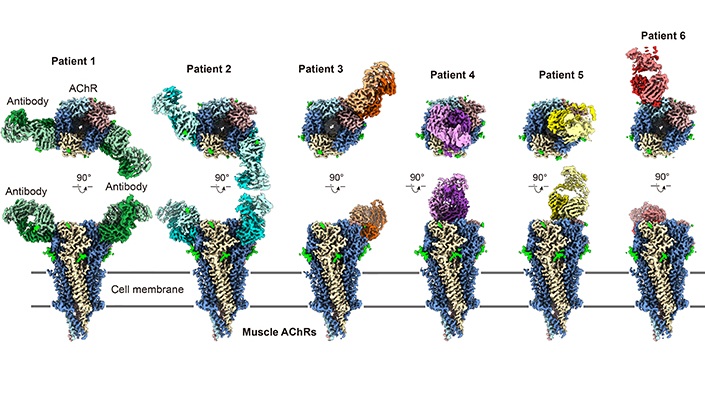
Advanced Imaging Reveals Mechanisms Causing Autoimmune Disease
Myasthenia gravis, an autoimmune disease, leads to muscle weakness that can affect a range of muscles, including those needed for basic actions like blinking, smiling, or moving. Researchers have long... Read more
AI Model Effectively Predicts Patient Outcomes in Common Lung Cancer Type
Lung adenocarcinoma, the most common form of non-small cell lung cancer (NSCLC), typically adopts one of six distinct growth patterns, often combining multiple patterns within a single tumor.... Read moreTechnology
view channel
Pain-On-A-Chip Microfluidic Device Determines Types of Chronic Pain from Blood Samples
Chronic pain is a widespread condition that remains difficult to manage, and existing clinical methods for its treatment rely largely on self-reporting, which can be subjective and especially problematic... Read more
Innovative, Label-Free Ratiometric Fluorosensor Enables More Sensitive Viral RNA Detection
Viruses present a major global health risk, as demonstrated by recent pandemics, making early detection and identification essential for preventing new outbreaks. While traditional detection methods are... Read moreIndustry
view channel
Cepheid and Oxford Nanopore Technologies Partner on Advancing Automated Sequencing-Based Solutions
Cepheid (Sunnyvale, CA, USA), a leading molecular diagnostics company, and Oxford Nanopore Technologies (Oxford, UK), the company behind a new generation of sequencing-based molecular analysis technologies,... Read more
Grifols and Tecan’s IBL Collaborate on Advanced Biomarker Panels
Grifols (Barcelona, Spain), one of the world’s leading producers of plasma-derived medicines and innovative diagnostic solutions, is expanding its offer in clinical diagnostics through a strategic partnership... Read more




